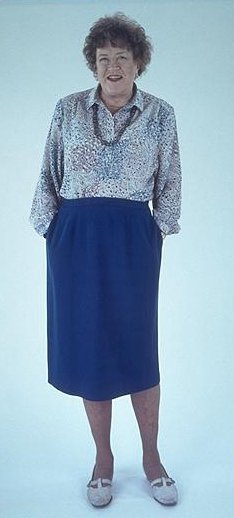Guest Post: My Week At Bookseller Hogwarts
by Megan Bell, First-Year
If bookselling is an extreme sport, as the venerable Messrs. Rob Rulon-Miller and Lorne Bair rousingly declared the first morning, the
Colorado Antiquarian Book Seminar (CABS) is certainly high-altitude learning. In fact, I would and will go as far as to say it's as extreme as Quidditch and CABS is a classroom overlooking the Pitch.

Before I go on to make some
siriusly riddikulus connections between CABS and J.K. Rowling's Harry Potter series, which is exactly what I intend to do, I feel I should provide some context as to why I think this is a reasonable connection to make. For one thing, the future of the book trade depends on future booksellers and future collectors. Though some may bemoan millennials as the digitization generation, I believe it is important to keep in mind that we are also the Harry Potter generation--you don't have to convince us that books are magical.
Through our adolescence and into adulthood, we queued up, dressed in costume, sipped "Butterbeer" from paper cups, and spent hours counting down the minutes to midnight and a new Harry Potter book in our hands. The key idea here is the memory of finally having that book in hand, and that memory is imbued with feelings of excitement and joy and community. Though many of us have gone on to embrace the digitization trend, toting e-readers instead of books around in our bags and backpacks, our love of books began with a physical book, wrapped like a Christmas present in a beautiful dust jacket with illustrations by Mary GrandPré. In comparison to contemporary children's and young adult books, these were fine bindings. The CABS faculty spoke to the sensual nature of books, how books are visual and tangible, of course, but also delightful to smell, and it is distinctly lovely to hear the susurration of page on page. This generation has sense memories of the entire Harry Potter series, and though it was the text that drove us en masse to these release events, we were indoctrinated early with a pleasure in seeing, touching, smelling, and hearing physical books (never tasting, I promise).
Furthermore, Rowling constantly points to the importance of books throughout the series, starting in the first book, where Harry, Hermione, and Ron must conduct serious research in the Hogwarts library to find the identity of Nicholas Flamel, and many events hinge on Hermione's encyclopedic knowledge of Bathilda Bagshot's classic
Hogwarts: A History. The series admirably examines the vast landscape of the physical book, from required reading textbooks to Gilderoy Lockhart's mass market titles, from the Restricted Section of the Hogwarts library to Diagon Alley's independent brick-and-mortar Flourish and Blotts. The original handwritten manuscript of
Hogwarts: A History is even contained in the Restricted Section and available by appointment only. Throughout the series, the characters must depend on and contend with books, and Hermione's bibliophilia serves them well.
TL;DR: As the explosively successful films and the now multinational "Wizarding World of Harry Potter" attractions attest, the people at Warner Bros. and Universal Studios very smartly recognize and continue to capitalize on the Harry Potter generation, and the book trade would be wise to not discount them.
That said, the CABS experience was for me as full of pure magic as my first reading, at the tender age of eight, of
Harry Potter and the Sorcerer's Stone, from the august and brilliant faculty, full of gravitas and kindness, to the student body, a more enthusiastic bunch has never been witnessed, I'm certain. If you want to learn from the best, from people like Lorne Bair of Lorne Bair Rare Books, Rob Rulon-Miller of Rulon-Miller Books, Terry Belanger (Order of Merlin, First Class) of the University of Virginia and Rare Book School, Sally Burdon of Asia Bookroom, Brian Cassidy of Brian Cassidy, Bookseller, Dan De Simone of the Folger Shakespeare Library, Dan Gregory (formerly) of Between the Covers, Nina Musinsky of Musinsky Rare Books, Inc., and Steve Smith of the University of Tennessee Library, if you want the guidance of Head Girls Zhenya Dzhavgova of ZH BOOKS and Maria Lin of Rulon-Miller Books, if you want to be surrounded by world-class peers and fight side-by-side with them in the battle of antiquarian bookselling, then come to Colorado. By the end of the first day, I truly felt like a first-year muggleborn come to Hogwarts, sitting in the Great Hall on the first night, just after the sorting, looking around and thinking, "These nutters are my people."
CABS covers such subjects as the Care of Magical Creatures (Tips on the Care and Handling of Books), History of Magic (Descriptive Bibliography I and II), Charms (it's duodecimo, not dew-decee-muh), Defense Against the Dark Arts (Fakes, Forgeries & Theft), Arithmancy (Collation), Herbology (printing and binding materials), Potions (Refurbishing Books), Transfiguration (turning a bought book into a sold book), and Divination (Evaluating & Buying Books, Scouting).
There's even a CABS Sorting Hat (of sorts). The houses here are not Gryffindor, Hufflepuff, Ravenclaw, and Slytherin--you must be brave, ethical, studious, and ambitious to be a bookseller--but as Dan Gregory explained in "Marketing the Antiquarian Book Trade," you may be a scholarly, humorous, service-oriented, or reading bookseller. Or you may belong in explorative, where dwell the brave in heart (the travels in their catalogues set these booksellers apart).
So I say to my fellow millennial bibliophiles, stop straining your ears for the sound of owl's wings and consider this your letter of acceptance to CABS School of Bookcraft and Bibliography. If your Gringotts vault isn't gleaming with galleons, you need only consult the Bookseminars.com scholarship page, as I did. It is with great and ongoing gratitude to the ABAA Wizengamot that I was able to attend CABS this year.
--
Megan Bell co-owns
Underground Books in Carrollton, Georgia, with her husband, former CABS seminarian and "
Bright Young Thing," Josh Niesse.
Image of the author, courtesy of Zhenya Dzhavgova. 













